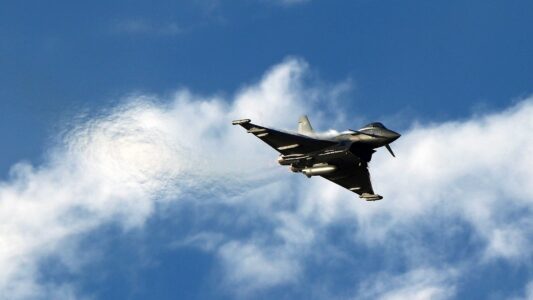
UK typhoon planes bomb four Islamic State caves in northern Iraq
A group of caves, situated thirty miles north-west of Tikrit, were confirmed as being used by Islamic State both as accommodation and storage for improvised explosive devices.
Two Typhoons were accordingly tasked to attack the terrorist position on Monday the 22nd of June.
Having checked the area for any civilians who might be at risk, four Paveway IVs were successfully used to strike four carefully selected targets within the cave network.
The Ministry of Defence say that since liberating the last territory held by Daesh, in March 2019, the RAF has flown daily armed reconnaissance patrols to “prevent the violent extremists from re-establishing footholds in Iraq or Syria”.
The Ministry of Defence also advise that precision strikes result from the “patient and methodical production of actionable intelligence”, and are “only conducted after thorough surveillance of the target and surrounding area for any signs of civilians, ensuring they are not placed at risk”.
This section is intended to provide a bit of background on British efforts in the region and if you’ve read it before, please remember others may not have.
In September last year, the Ministry of Defence had announced that over 1,000 personnel were engaged in theatre and that the Royal Air Force had conducted around 1,000 airstrikes, flying over 2,800 sorties, killing over 3,000 Islamic State fighters.
Last year, it was reported that the Royal Air Force was operating at its most intense for 25 years in a single theatre of operation which far outstripped the UK involvement in Iraq and Afghanistan – RAF jets have dropped 11 times more bombs (1,276 strikes) on Syria and Iraq in the preceding 12 months than they had in the busiest year of action in Afghanistan a decade previously.
Source: UK Defence Journal





